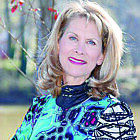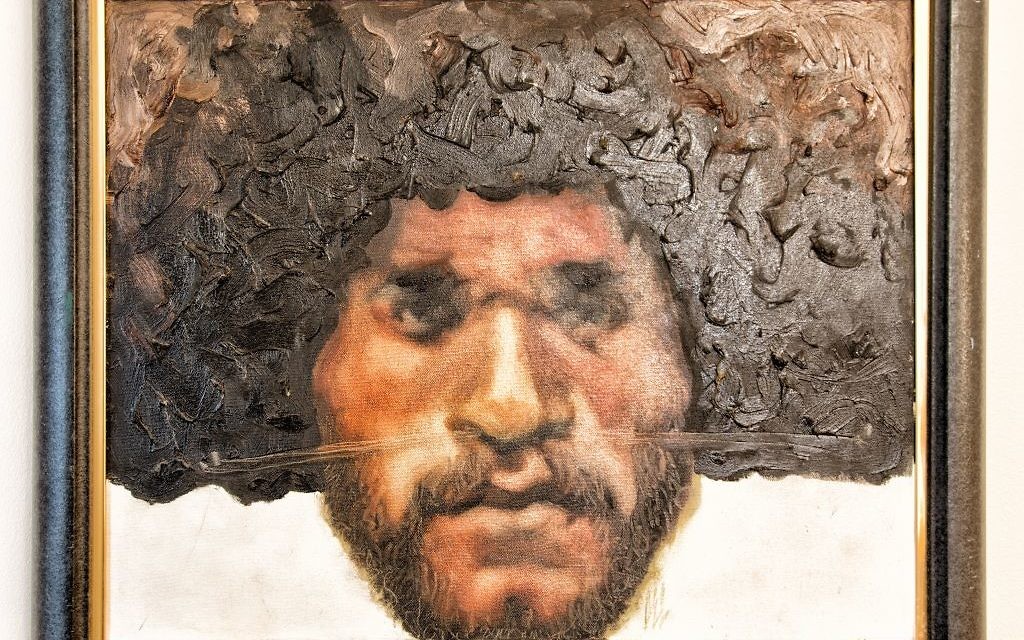Artist of Indigenous Peoples Spans the Globe
Cultivating culture through art shapes Atlanta home's interior.
Atlanta has a treasure in her ninth decade whose mission is to capture and preserve the heritage and culture of Native Americans and other indigenous peoples. Gracefully tall Dee (Dolores) Venzer feels that her paintings and sculpture have the effect of storytelling.
Atlanta has a treasure in her ninth decade whose mission is to capture and preserve the heritage and culture of Native Americans and other indigenous peoples. Gracefully tall Dee (Dolores) Venzer feels that her paintings and sculpture have the effect of storytelling.
From a Western dude ranch to an elephant ride at Tiger Tops in Nepal, the peripatetic Venzer’s portraits evoke humanity and emotion.
Get The AJT Newsletter by email and never miss our top stories Free Sign Up
A fine arts graduate of the University of Georgia, she had an advertising career at Rich’s Department Store downtown. There was only one Rich’s in those days.
Venzer studied under one of Georgia’s most respected artists, Ouida Canaday, who founded Artists Atelier, which is still thriving.
Share her exotic experiences.
Photos by Duane Stork
Jaffe: How have your travels influenced your art?
Venzer: My mission is to capture these real people in the continuity of their culture and heritage. In America, I venture out west — New Mexico, Arizona. That surfaces a funny memory: In my naiveté at my first Native American powwow, I lugged the wrong camera and film and lost all the images.

In New Mexico, I painted the chief, Thin Elk, who appeared in many movies. They are very regal people.
One of my favorite pieces in the foyer is this collection of nine panels of portraits typical of the different cultures from my travels.

Internationally, I highlight New Guinea; Kathmandu, Nepal; India; Africa; China; and Spain. It’s all so fascinating, like this Huli from Papua who was proud of his headgear, which is actually real hair interwoven with mats and flowers. They grow their own hair, enhance it, then shave. They wear one for every day, one for ceremonies.

Jaffe: You had an inspiring teacher?
Venzer: I took lessons and traveled for many years with Ouida Canaday. She was the president and one of the founders of the Piedmont Park Arts Festival, appointed by Governor Sanders as vice president of the Georgia Arts Council.
I have her original “Chinese Faces” sketchbook on textured orange paper. She painted my portrait in 1974 and that of my late husband as a wedding gift.

Jaffe: What is your role in the Artists Atelier?
Venzer: I was one of the co-op’s founding principals over 20 years ago. We’re composed of 17 artists in a working studio gallery. It’s open to the public, and our original work sells at very reasonable prices. We originally started on Cheshire Bridge, then moved to Collier Road, now 800 Miami Circle. It’s a win-win for us to share space and such creativity five days a week. Come visit!
Jaffe: Describe the various media you employ.
Venzer: I sculpt in clay, like the huge warrior bust in the dining room. Sometimes it stays in that basic format. Others I have cast in bronze, like the two male and female Maasai warriors in the living room alcoves.

Most traditionally, I use oil for portraits in a gallery-wrap format (painting around the side edges) and do not frame my work. I don’t want the image contained.
One of my favorite oils is in the kitchen, “Vagabond King,” of a man I saw at a homeless shelter.
Behind this 4-foot-wide window ornament is “White Lace Handkerchief,” an oil I did juxtaposed in several layers. So it’s all over the board in style and texture.

Sometimes I use charcoal.
Jaffe: What’s your relationship with the Booth Museum? Where else is your work shown?
Venzer: I have paintings in the private and permanent Booth collections and on their website in an oral history segment. I originally sent them my portfolio (laughing) thinking it was just a local museum. (It is affiliated with the Smithsonian in Washington). After taking me on a tour, the director asked if I would be willing to show my work on some of the empty walls downstairs. I said, “I would be willing to display in the bathroom to get into this caliber facility.”
I am featured in the “Booth Permanent Collection” book with “Camaraderie Moment” (2002 oil on canvas) of a Native American rodeo. If readers have not been, I encourage the short drive to Cartersville to see a true gem of a museum.

Celebrities like Jack Nicklaus and Brooke Shields, who bought as a gift for Andre Agassi, collect my work. (After their breakup, I wonder who kept the art.)
I won second prize in a Grumbacher (the purveyor of fine art supplies) contest, with the painting in my foyer, done in heavy gesso-ed acrylic, featured in their magazine. I flooded it with water to achieve rhythm and motion over detail; thus, it has many layers and stages.

One of my career highlights was having a painting and reception at the Kennedy Center from an AARP competition where 40 pieces out of 900 were selected. It traveled the country for one year, then landed in the White House Conference Center. I also have paintings at the Forum Gallery in Delray.
Jaffe: What are things that you collect?
Venzer: Years ago (1960s to 1970s), I worked with interior designer Louis Soloway at David Interiors. We found many eclectic treasures, like this 25-foot Asian lacquer screen that was so large, we had to saw off the bottom to get it inside. Also, I adore this off-white sculpture of a life-sized, layered, acrylic draped cloth by the front door.
This vivid, hand-embroidered throw from India brings back a memory when we were rushed out of the country because of a coup. They didn’t tell us until we were out of danger.
Jaffe: What’s next for you?
Venzer: Soon I’m off to Iceland, hopefully to witness the aurora borealis. I won’t paint it, as I do not do landscapes. I can’t improve upon Mother Nature. Basically, you could say I am a Northeast artist doing Northwest art.

Jaffe: Last word?
Venzer: I have a lot of treasures here. If I ever got organized





comments